Sarali Varisai (also referred as Swaravali Varisaigal) is the basic Carnatic music exercise or fundamental musical sequences that serves as building blocks for beginner students for both carnatic style singing and also for carnatic instruments. There are totally 14 exercises and the notes are also sometimes referred as sarali varisai lyrics is to be practised in 3 speeds. Once the student has mastered this they can move to the next set of exercises called Janta Varisai.
Swara practise in Sarali Varisai helps students to get a good grasp of melody and rhythm. This exercise is practised in Mayamalava Gowlava Raagam & Adi Talam (8 beats).
Sarali Varisai Importance
Learning Saralai Varisai is easy for beginners as the swaras or the sarali varisai notes are placed in balanced distances from one another and the swara practise in carnatic music is essential to get the basics strong. Here the purvanga or first half is symmetrical to the uttaranga or second half. This helps a student to render the raga easily. This exercise is set in one octave beginning from Madhya shadja to Tara shadja.
The key feature of Sarali varisai is the sequence in which they have been composed. So learning this helps student to progress step by step, so that the student understands about the interval between the swaras. In a nutshell sarali varisai exercises help a student to get a firm grip of rhythm and timing sense, which are essential skills in learning carnatic music.
Sarali Varisai is referred as Sarali Swaralu in Telugu.
How to Practise Sarali Varisai
Based on my teaching experience of Carnatic music for more than 7+ years, I have given below two simple steps to practice this.
Step 1
The first step is to find a comfortable note to start with. Students are recommended strongly to use Shruti Box or take a help of carnatic music teacher to start with. This is very important, else you will find difficult as the intensity of the exercises gets built up.
Once you fix the note on Shruti box (Sa note) students should listen to the note and try to hum or reproduce the note that comes from Shruti box . Initially it will be a challenge, but with practise they will be able to match the note. Students should pay attention to match the note, try to sustain in tune as long as possible. Sustaining the note is called as ‘Kaarvai’. Singing in pitch, holding breath and releasing the breath when the note is over is important before moving to exercises.
Step 2
The second step is to practise the exercises in different speeds. I have given below the details of same
Sarali Varisai has 14 exercises and it has to be practised in three speeds as given below.
- First speed – One note per beat.
- Second speed – Two notes per beat.
- Third speed – Four notes per beat.
You can move to fourth speed i.e. eight notes per beat, but for a beginner we strongly recommend that you first stay in 3 speed.
This exercise has to be practised in the raga Mayamalavagowla, which is suited for a beginner to learn both in vocal and instrumental. This raga or scale is practised in Arohana (ascending) and in Avarohana (descending) patterns as shown below.
Arohana : s r1 g3 m1 p d1 n3 s
Avarohana : S n3 d1 p m1 g3 r1 s
Sarali Varisai Notes and Lyrics in English, Tamil, Telugu , Kannanda & Malayalam
Sarali Varisai 1 – Simple ascent/descent
Laya pattern: 1234 5678
|
|
Sa |
Ri |
Ga |
Ma |
| |
Pa |
Da |
I |
Ni |
Ṡa |
|| |
| |
Ṡa |
Ni |
Da |
Pa |
| |
Ma |
Ga |
| |
Ri |
Sa |
|| |
Sarali Varisai 2 – Focus on R and N
Laya pattern: 12-12-1234 and 1234 5678
|
|
S |
R |
S |
R |
| |
S |
R |
| |
G |
M |
|| |
| |
S |
R |
G |
M |
| |
P |
D |
| |
N |
Ṡ |
|| |
| |
Ṡ |
N |
Ṡ |
N |
| |
Ṡ |
N |
| |
D |
P |
|| |
| |
Ṡ |
N |
D |
P |
| |
M |
G |
| |
R |
S |
|| |
| |
|
|
|
|
|
|
|
|
|
|
|
Sarali Varisai 3 – Focus on G and D
Laya pattern: 123-123-12 and 1234 5678
|
|
S |
R |
G |
S |
| |
R |
G |
| |
S |
R |
|| |
| |
S |
R |
G |
M |
| |
P |
D |
| |
N |
Ṡ |
|| |
| |
Ṡ |
N |
D |
Ṡ |
| |
N |
D |
| |
Ṡ |
N |
|| |
| |
Ṡ |
N |
D |
P |
| |
M |
G |
| |
R |
S |
|| |
| |
|
|
|
|
|
|
|
|
|
|
|
Sarali Varisai 4 – Focus on M and P
Laya pattern: 1234-1234 and 1234 5678
|
|
S |
R |
G |
M |
| |
S |
R |
| |
G |
M |
|| |
| |
S |
R |
G |
M |
| |
P |
D |
| |
N |
Ṡ |
|| |
| |
Ṡ |
N |
D |
P |
| |
Ṡ |
N |
| |
D |
P |
|| |
| |
Ṡ |
N |
D |
P |
| |
M |
G |
| |
R |
S |
|| |
| |
|
|
|
|
|
|
|
|
|
|
|
Sarali Varisai 5 – Focus on P and M (dheergam); and R, N
Laya pattern: 1234 56-12 and 1234 5678
|
|
S |
R |
G |
M |
| |
P |
, |
| |
S |
R |
|| |
| |
S |
R |
G |
M |
| |
P |
D |
| |
N |
Ṡ |
|| |
| |
Ṡ |
N |
D |
P |
| |
M |
, |
| |
Ṡ |
N |
|| |
| |
Ṡ |
N |
D |
P |
| |
M |
G |
| |
R |
S |
|| |
| |
|
|
|
|
|
|
|
|
|
|
|
Sarali Varisai 6 – Focus on G and D
Laya pattern: 1234 56-12 and 1234 5678
|
|
S |
R |
G |
M |
| |
P |
D |
| |
S |
R |
|| |
| |
S |
R |
G |
M |
| |
P |
D |
| |
N |
Ṡ |
|| |
| |
Ṡ |
N |
D |
P |
| |
M |
G |
| |
Ṡ |
N |
|| |
| |
Ṡ |
N |
D |
P |
| |
M |
G |
| |
R |
S |
|| |
| |
|
|
|
|
|
|
|
|
|
|
|
Sarali Varisai 7 – Focus on N and R (dheergam)
Laya pattern: 1234 56-7, and 1234 5678
|
|
S |
R |
G |
M |
| |
P |
D |
| |
N |
, |
|| |
| |
S |
R |
G |
M |
| |
P |
D |
| |
N |
Ṡ |
|| |
| |
Ṡ |
N |
D |
P |
| |
M |
G |
| |
R |
, |
|| |
| |
Ṡ |
N |
D |
P |
| |
M |
G |
| |
R |
S |
|| |
| |
|
|
|
|
|
|
|
|
|
|
|
Sarali Varisai 8 – Zig Zag with Focus on “pmgr” and “mpdn”
Laya pattern: 1234 -4321 and 1234 5678
|
|
S |
R |
G |
M |
| |
P |
M |
| |
G |
R |
|| |
| |
S |
R |
G |
M |
| |
P |
D |
| |
N |
Ṡ |
|| |
| |
Ṡ |
N |
D |
P |
| |
M |
P |
| |
D |
N |
|| |
| |
Ṡ |
N |
D |
P |
| |
M |
G |
| |
R |
S |
|| |
| |
|
|
|
|
|
|
|
|
|
|
|
Sarali Varisai 9 – Zig Zag with Focus on “pmdp” and “mpgm”
Laya pattern: 1234 -4321 and 1234 5678
|
|
S |
R |
G |
M |
| |
P |
M |
| |
D |
P |
|| |
| |
S |
R |
G |
M |
| |
P |
D |
| |
N |
Ṡ |
|| |
| |
Ṡ |
N |
D |
P |
| |
M |
P |
| |
G |
M |
|| |
| |
Ṡ |
N |
D |
P |
| |
M |
G |
| |
R |
S |
|| |
| |
|
|
|
|
|
|
|
|
|
|
|
Sarali Varisai 10 – Focus on P (dheergam) and the region between G and N and practicing resting on G (nyaasa swaram)
Laya pattern: 1234 56-12 and 1 , , , 1 , , , and
1234 – 4321 and 1234 5678
|
|
S |
R |
G |
M |
| |
P |
, |
| |
G |
M |
|| |
| |
P |
, |
, |
, |
| |
P |
, |
| |
, |
, |
|| |
| |
G |
M |
P |
D |
| |
N |
D |
| |
P |
M |
|| |
| |
G |
M |
P |
G |
| |
M |
G |
| |
R |
S |
|| |
| |
|
|
|
|
|
|
|
|
|
|
|
Sarali Varisai 11 – Focus on dheergams at S, N, D, P
Simple patterns: “Snd”, “Ndp”, “Dpm” and the region between G and N (finishing phrases)
|
|
Ṡ |
, |
N |
D |
| |
N |
, |
| |
D |
P |
|| |
| |
D |
, |
P |
M |
| |
P |
, |
| |
P |
, |
|| |
| |
G |
M |
P |
D |
| |
N |
D |
| |
P |
M |
|| |
| |
G |
M |
P |
G |
| |
M |
G |
| |
R |
S |
|| |
| |
|
|
|
|
|
|
|
|
|
|
|
Sarali Varisai 12 – Preview of Janta (sphuritam) concept: “SS”, “nn”, “dd”, “pp”
Simple patterns: “SSnd”, “nndp”, “ddpm” Dheergam at “paa” and the region between G and N (finishing phrases)
|
|
Ṡ |
Ṡ |
N |
D |
| |
N |
N |
| |
D |
P |
|| |
| |
D |
D |
P |
M |
| |
P |
, |
| |
P |
, |
|| |
| |
G |
M |
P |
D |
| |
N |
D |
| |
P |
M |
|| |
| |
G |
M |
P |
G |
| |
M |
G |
| |
R |
S |
|| |
| |
|
|
|
|
|
|
|
|
|
|
|
Sarali Varisai 13 – ZigZag Patterns: “srgr G”, “gmpmP”
Dheergam Focus: G, P, D and the region between M and N
|
|
S |
R |
G |
R |
| |
G |
, |
| |
G |
M |
|| |
| |
P |
M |
P |
, |
| |
D |
P |
| |
D |
, |
|| |
| |
M |
P |
D |
P |
| |
D |
N |
| |
D |
P |
|| |
| |
M |
P |
D |
P |
| |
M |
G |
| |
R |
S |
|| |
| |
|
|
|
|
|
|
|
|
|
|
|
Sarali Varisai 14 – Dheergam at P and S. Jantas at D and M
|
|
S |
R |
G |
M |
| |
P |
, |
| |
P |
, |
|| |
| |
D |
D |
P |
, |
| |
M |
M |
| |
P |
, |
|| |
| |
D |
N |
Ṡ |
, |
| |
Ṡ |
N |
| |
D |
P |
|| |
| |
Ṡ |
N |
D |
P |
| |
M |
G |
| |
R |
S |
|| |
|
| 1. |
ஸ |
ரி |
க³ |
ம |
। |
ப |
த³ |
। |
நி |
ஸ' |
॥ |
|
ஸ' |
நி |
த³ |
ப |
। |
ம |
க³ |
। |
ரி |
ஸ |
॥ |
|
| 2. |
ஸ |
ரி |
ஸ |
ரி |
। |
ஸ |
ரி |
। |
க³ |
ம |
॥ |
|
ஸ |
ரி |
க³ |
ம |
। |
ப |
த³ |
। |
நி |
ஸ' |
॥ |
|
ஸ' |
நி |
ஸ' |
நி |
। |
ஸ' |
நி |
। |
த³ |
ப |
॥ |
|
ஸ' |
நி |
த³ |
ப |
। |
ம |
க³ |
। |
ரி |
ஸ |
॥ |
|
| 3. |
ஸ |
ரி |
க³ |
ஸ |
। |
ரி |
க³ |
। |
ஸ |
ரி |
॥ |
|
ஸ |
ரி |
க³ |
ம |
। |
ப |
த³ |
। |
நி |
ஸ' |
॥ |
|
ஸ' |
நி |
த³ |
ஸ' |
। |
நி |
த³ |
। |
ஸ' |
நி |
॥ |
|
ஸ' |
நி |
த³ |
ப |
। |
ம |
க³ |
। |
ரி |
ஸ |
॥ |
|
| 4. |
ஸ |
ரி |
க³ |
ம |
। |
ஸ |
ரி |
। |
க³ |
ம |
॥ |
|
ஸ |
ரி |
க³ |
ம |
। |
ப |
த³ |
। |
நி |
ஸ' |
॥ |
|
ஸ' |
நி |
த³ |
ப |
। |
ஸ' |
நி |
। |
த³ |
ப |
॥ |
|
ஸ' |
நி |
த³ |
ப |
। |
ம |
க³ |
। |
ரி |
ஸ |
॥ |
|
| 5. |
ஸ |
ரி |
க³ |
ம |
। |
ப |
, |
। |
ஸ |
ரி |
॥ |
|
ஸ |
ரி |
க³ |
ம |
। |
ப |
த³ |
। |
நி |
ஸ' |
॥ |
|
ஸ' |
நி |
த³ |
ப |
। |
ம |
, |
। |
ஸ' |
நி |
॥ |
|
ஸ' |
நி |
த³ |
ப |
। |
ம |
க³ |
। |
ரி |
ஸ |
॥ |
|
| 6. |
ஸ |
ரி |
க³ |
ம |
। |
ப |
த³ |
। |
ஸ |
ரி |
॥ |
|
ஸ |
ரி |
க³ |
ம |
। |
ப |
த³ |
। |
நி |
ஸ' |
॥ |
|
ஸ' |
நி |
த³ |
ப |
। |
ம |
க³ |
। |
ஸ' |
நி |
॥ |
|
ஸ' |
நி |
த³ |
ப |
। |
ம |
க³ |
। |
ரி |
ஸ |
॥ |
|
| 7. |
ஸ |
ரி |
க³ |
ம |
। |
ப |
த³ |
। |
நி |
, |
॥ |
|
ஸ |
ரி |
க³ |
ம |
। |
ப |
த³ |
। |
நி |
ஸ' |
॥ |
|
ஸ' |
நி |
த³ |
ப |
। |
ம |
க³ |
। |
ரி |
, |
॥ |
|
ஸ' |
நி |
த³ |
ப |
। |
ம |
க³ |
। |
ரி |
ஸ |
॥ |
|
| 8. |
ஸ |
ரி |
க³ |
ம |
। |
ப |
ம |
। |
க³ |
ரி |
॥ |
|
ஸ |
ரி |
க³ |
ம |
। |
ப |
த³ |
। |
நி |
ஸ' |
॥ |
|
ஸ' |
நி |
த³ |
ப |
। |
ம |
ப |
। |
த³ |
நி |
॥ |
|
ஸ' |
நி |
த³ |
ப |
। |
ம |
க³ |
। |
ரி |
ஸ' |
॥ |
|
| 9. |
ஸ |
ரி |
க³ |
ம |
। |
ப |
ம |
। |
த³ |
ப |
॥ |
|
ஸ |
ரி |
க³ |
ம |
। |
ப |
த³ |
। |
நி |
ஸ' |
॥ |
|
ஸ' |
நி |
த³ |
ப |
। |
ம |
ப |
। |
க³ |
ம |
॥ |
|
ஸ' |
நி |
த³ |
ப |
। |
ம |
க³ |
। |
ரி |
ஸ |
॥ |
|
| 10. |
ஸ |
ரி |
க³ |
ம |
। |
ப |
, |
। |
க³ |
ம |
॥ |
|
ப |
, |
, |
, |
। |
ப |
, |
। |
, |
, |
॥ |
|
க³ |
ம |
ப |
த³ |
। |
நி |
த³ |
। |
ப |
ம |
॥ |
|
க³ |
ம |
ப |
க³ |
। |
ம |
க³ |
। |
ரி |
ஸ |
॥ |
|
| 11. |
ஸ' |
, |
நி |
த³ |
। |
நி |
, |
। |
த³ |
ப |
॥ |
|
த³ |
, |
ப |
ம |
। |
ப |
, |
। |
ப |
, |
॥ |
|
க³ |
ம |
ப |
த³ |
। |
நி |
த³ |
। |
ப |
ம |
॥ |
|
க³ |
ம |
ப |
க³ |
। |
ம |
க³ |
। |
ரி |
ஸ |
॥ |
|
| 12. |
ஸ' |
ஸ' |
நி |
த³ |
। |
நி |
நி |
। |
த³ |
ப |
॥ |
|
த³ |
த³ |
ப |
ம |
। |
ப |
, |
। |
ப |
, |
॥ |
|
க³ |
ம |
ப |
த³ |
। |
நி |
த³ |
। |
ப |
ம |
॥ |
|
க³ |
ம |
ப |
க³ |
। |
ம |
க³ |
। |
ரி |
ஸ |
॥ |
|
| 13. |
ஸ |
ரி |
க³ |
ரி |
। |
க³ |
, |
। |
க³ |
ம |
॥ |
|
ப |
ம |
ப |
, |
। |
த³ |
ப |
। |
த³ |
, |
॥ |
|
ம |
ப |
த³ |
ப |
। |
த³ |
நி |
। |
த³ |
ப |
॥ |
|
ம |
ப |
த³ |
ப |
। |
ம |
க³ |
। |
ரி |
ஸ |
॥ |
|
| 14. |
ஸ |
ரி |
க³ |
ம |
। |
ப |
, |
। |
ப |
, |
॥ |
|
த³ |
த³ |
ப |
, |
। |
ம |
ம |
। |
ப |
, |
॥ |
|
த³ |
நி |
ஸ' |
, |
। |
ஸ' |
நி |
। |
த³ |
ப |
॥ |
|
ஸ' |
நி |
த³ |
ப |
। |
ம |
க³ |
। |
ரி |
ஸ |
॥ |
|
| 1. |
స |
రి |
గ |
మ |
। |
ప |
ద |
। |
ని |
స' |
॥ |
|
స' |
ని |
ద |
ప |
। |
మ |
గ |
। |
రి |
స |
॥ |
|
| 2. |
స |
రి |
స |
రి |
। |
స |
రి |
। |
గ |
మ |
॥ |
|
స |
రి |
గ |
మ |
। |
ప |
ద |
। |
ని |
స' |
॥ |
|
స' |
ని |
స' |
ని |
। |
స' |
ని |
। |
ద |
ప |
॥ |
|
స' |
ని |
ద |
ప |
। |
మ |
గ |
। |
రి |
స |
॥ |
|
| 3. |
స |
రి |
గ |
స |
। |
రి |
గ |
। |
స |
రి |
॥ |
|
స |
రి |
గ |
మ |
। |
ప |
ద |
। |
ని |
స' |
॥ |
|
స' |
ని |
ద |
స' |
। |
ని |
ద |
। |
స' |
ని |
॥ |
|
స' |
ని |
ద |
ప |
। |
మ |
గ |
। |
రి |
స |
॥ |
|
| 4. |
స |
రి |
గ |
మ |
। |
స |
రి |
। |
గ |
మ |
॥ |
|
స |
రి |
గ |
మ |
। |
ప |
ద |
। |
ని |
స' |
॥ |
|
స' |
ని |
ద |
ప |
। |
స' |
ని |
। |
ద |
ప |
॥ |
|
స' |
ని |
ద |
ప |
। |
మ |
గ |
। |
రి |
స |
॥ |
|
| 5. |
స |
రి |
గ |
మ |
। |
ప |
, |
। |
స |
రి |
॥ |
|
స |
రి |
గ |
మ |
। |
ప |
ద |
। |
ని |
స' |
॥ |
|
స' |
ని |
ద |
ప |
। |
మ |
, |
। |
స' |
ని |
॥ |
|
స' |
ని |
ద |
ప |
। |
మ |
గ |
। |
రి |
స |
॥ |
|
| 6. |
స |
రి |
గ |
మ |
। |
ప |
ద |
। |
స |
రి |
॥ |
|
స |
రి |
గ |
మ |
। |
ప |
ద |
। |
ని |
స' |
॥ |
|
స' |
ని |
ద |
ప |
। |
మ |
గ |
। |
స' |
ని |
॥ |
|
స' |
ని |
ద |
ప |
। |
మ |
గ |
। |
రి |
స |
॥ |
|
| 7. |
స |
రి |
గ |
మ |
। |
ప |
ద |
। |
ని |
, |
॥ |
|
స |
రి |
గ |
మ |
। |
ప |
ద |
। |
ని |
స' |
॥ |
|
స' |
ని |
ద |
ప |
। |
మ |
గ |
। |
రి |
, |
॥ |
|
స' |
ని |
ద |
ప |
। |
మ |
గ |
। |
రి |
స |
॥ |
|
| 8. |
స |
రి |
గ |
మ |
। |
ప |
మ |
। |
గ |
రి |
॥ |
|
స |
రి |
గ |
మ |
। |
ప |
ద |
। |
ని |
స' |
॥ |
|
స' |
ని |
ద |
ప |
। |
మ |
ప |
। |
ద |
ని |
॥ |
|
స' |
ని |
ద |
ప |
। |
మ |
గ |
। |
రి |
స' |
॥ |
|
| 9. |
స |
రి |
గ |
మ |
। |
ప |
మ |
। |
ద |
ప |
॥ |
|
స |
రి |
గ |
మ |
। |
ప |
ద |
। |
ని |
స' |
॥ |
|
స' |
ని |
ద |
ప |
। |
మ |
ప |
। |
గ |
మ |
॥ |
|
స' |
ని |
ద |
ప |
। |
మ |
గ |
। |
రి |
స |
॥ |
|
| 10. |
స |
రి |
గ |
మ |
। |
ప |
, |
। |
గ |
మ |
॥ |
|
ప |
, |
, |
, |
। |
ప |
, |
। |
, |
, |
॥ |
|
గ |
మ |
ప |
ద |
। |
ని |
ద |
। |
ప |
మ |
॥ |
|
గ |
మ |
ప |
గ |
। |
మ |
గ |
। |
రి |
స |
॥ |
|
| 11. |
స' |
, |
ని |
ద |
। |
ని |
, |
। |
ద |
ప |
॥ |
|
ద |
, |
ప |
మ |
। |
ప |
, |
। |
ప |
, |
॥ |
|
గ |
మ |
ప |
ద |
। |
ని |
ద |
। |
ప |
మ |
॥ |
|
గ |
మ |
ప |
గ |
। |
మ |
గ |
। |
రి |
స |
॥ |
|
| 12. |
స' |
స' |
ని |
ద |
। |
ని |
ని |
। |
ద |
ప |
॥ |
|
ద |
ద |
ప |
మ |
। |
ప |
, |
। |
ప |
, |
॥ |
|
గ |
మ |
ప |
ద |
। |
ని |
ద |
। |
ప |
మ |
॥ |
|
గ |
మ |
ప |
గ |
। |
మ |
గ |
। |
రి |
స |
॥ |
|
| 13. |
స |
రి |
గ |
రి |
। |
గ |
, |
। |
గ |
మ |
॥ |
|
ప |
మ |
ప |
, |
। |
ద |
ప |
। |
ద |
, |
॥ |
|
మ |
ప |
ద |
ప |
। |
ద |
ని |
। |
ద |
ప |
॥ |
|
మ |
ప |
ద |
ప |
। |
మ |
గ |
। |
రి |
స |
॥ |
|
| 14. |
స |
రి |
గ |
మ |
। |
ప |
, |
। |
ప |
, |
॥ |
|
ద |
ద |
ప |
, |
। |
మ |
మ |
। |
ప |
, |
॥ |
|
ద |
ని |
స' |
, |
। |
స' |
ని |
। |
ద |
ప |
॥ |
|
స' |
ని |
ద |
ప |
। |
మ |
గ |
। |
రి |
స |
॥ |
|
| 1. |
ಸ |
ರಿ |
ಗ |
ಮ |
। |
ಪ |
ದ |
। |
ನಿ |
ಸ' |
॥ |
|
ಸ' |
ನಿ |
ದ |
ಪ |
। |
ಮ |
ಗ |
। |
ರಿ |
ಸ |
॥ |
|
| 2. |
ಸ |
ರಿ |
ಸ |
ರಿ |
। |
ಸ |
ರಿ |
। |
ಗ |
ಮ |
॥ |
|
ಸ |
ರಿ |
ಗ |
ಮ |
। |
ಪ |
ದ |
। |
ನಿ |
ಸ' |
॥ |
|
ಸ' |
ನಿ |
ಸ' |
ನಿ |
। |
ಸ' |
ನಿ |
। |
ದ |
ಪ |
॥ |
|
ಸ' |
ನಿ |
ದ |
ಪ |
। |
ಮ |
ಗ |
। |
ರಿ |
ಸ |
॥ |
|
| 3. |
ಸ |
ರಿ |
ಗ |
ಸ |
। |
ರಿ |
ಗ |
। |
ಸ |
ರಿ |
॥ |
|
ಸ |
ರಿ |
ಗ |
ಮ |
। |
ಪ |
ದ |
। |
ನಿ |
ಸ' |
॥ |
|
ಸ' |
ನಿ |
ದ |
ಸ' |
। |
ನಿ |
ದ |
। |
ಸ' |
ನಿ |
॥ |
|
ಸ' |
ನಿ |
ದ |
ಪ |
। |
ಮ |
ಗ |
। |
ರಿ |
ಸ |
॥ |
|
| 4. |
ಸ |
ರಿ |
ಗ |
ಮ |
। |
ಸ |
ರಿ |
। |
ಗ |
ಮ |
॥ |
|
ಸ |
ರಿ |
ಗ |
ಮ |
। |
ಪ |
ದ |
। |
ನಿ |
ಸ' |
॥ |
|
ಸ' |
ನಿ |
ದ |
ಪ |
। |
ಸ' |
ನಿ |
। |
ದ |
ಪ |
॥ |
|
ಸ' |
ನಿ |
ದ |
ಪ |
। |
ಮ |
ಗ |
। |
ರಿ |
ಸ |
॥ |
|
| 5. |
ಸ |
ರಿ |
ಗ |
ಮ |
। |
ಪ |
, |
। |
ಸ |
ರಿ |
॥ |
|
ಸ |
ರಿ |
ಗ |
ಮ |
। |
ಪ |
ದ |
। |
ನಿ |
ಸ' |
॥ |
|
ಸ' |
ನಿ |
ದ |
ಪ |
। |
ಮ |
, |
। |
ಸ' |
ನಿ |
॥ |
|
ಸ' |
ನಿ |
ದ |
ಪ |
। |
ಮ |
ಗ |
। |
ರಿ |
ಸ |
॥ |
|
| 6. |
ಸ |
ರಿ |
ಗ |
ಮ |
। |
ಪ |
ದ |
। |
ಸ |
ರಿ |
॥ |
|
ಸ |
ರಿ |
ಗ |
ಮ |
। |
ಪ |
ದ |
। |
ನಿ |
ಸ' |
॥ |
|
ಸ' |
ನಿ |
ದ |
ಪ |
। |
ಮ |
ಗ |
। |
ಸ' |
ನಿ |
॥ |
|
ಸ' |
ನಿ |
ದ |
ಪ |
। |
ಮ |
ಗ |
। |
ರಿ |
ಸ |
॥ |
|
| 7. |
ಸ |
ರಿ |
ಗ |
ಮ |
। |
ಪ |
ದ |
। |
ನಿ |
, |
॥ |
|
ಸ |
ರಿ |
ಗ |
ಮ |
। |
ಪ |
ದ |
। |
ನಿ |
ಸ' |
॥ |
|
ಸ' |
ನಿ |
ದ |
ಪ |
। |
ಮ |
ಗ |
। |
ರಿ |
, |
॥ |
|
ಸ' |
ನಿ |
ದ |
ಪ |
। |
ಮ |
ಗ |
। |
ರಿ |
ಸ |
॥ |
|
| 8. |
ಸ |
ರಿ |
ಗ |
ಮ |
। |
ಪ |
ಮ |
। |
ಗ |
ರಿ |
॥ |
|
ಸ |
ರಿ |
ಗ |
ಮ |
। |
ಪ |
ದ |
। |
ನಿ |
ಸ' |
॥ |
|
ಸ' |
ನಿ |
ದ |
ಪ |
। |
ಮ |
ಪ |
। |
ದ |
ನಿ |
॥ |
|
ಸ' |
ನಿ |
ದ |
ಪ |
। |
ಮ |
ಗ |
। |
ರಿ |
ಸ' |
॥ |
|
| 9. |
ಸ |
ರಿ |
ಗ |
ಮ |
। |
ಪ |
ಮ |
। |
ದ |
ಪ |
॥ |
|
ಸ |
ರಿ |
ಗ |
ಮ |
। |
ಪ |
ದ |
। |
ನಿ |
ಸ' |
॥ |
|
ಸ' |
ನಿ |
ದ |
ಪ |
। |
ಮ |
ಪ |
। |
ಗ |
ಮ |
॥ |
|
ಸ' |
ನಿ |
ದ |
ಪ |
। |
ಮ |
ಗ |
। |
ರಿ |
ಸ |
॥ |
|
| 10. |
ಸ |
ರಿ |
ಗ |
ಮ |
। |
ಪ |
, |
। |
ಗ |
ಮ |
॥ |
|
ಪ |
, |
, |
, |
। |
ಪ |
, |
। |
, |
, |
॥ |
|
ಗ |
ಮ |
ಪ |
ದ |
। |
ನಿ |
ದ |
। |
ಪ |
ಮ |
॥ |
|
ಗ |
ಮ |
ಪ |
ಗ |
। |
ಮ |
ಗ |
। |
ರಿ |
ಸ |
॥ |
|
| 11. |
ಸ' |
, |
ನಿ |
ದ |
। |
ನಿ |
, |
। |
ದ |
ಪ |
॥ |
|
ದ |
, |
ಪ |
ಮ |
। |
ಪ |
, |
। |
ಪ |
, |
॥ |
|
ಗ |
ಮ |
ಪ |
ದ |
। |
ನಿ |
ದ |
। |
ಪ |
ಮ |
॥ |
|
ಗ |
ಮ |
ಪ |
ಗ |
। |
ಮ |
ಗ |
। |
ರಿ |
ಸ |
॥ |
|
| 12. |
ಸ' |
ಸ' |
ನಿ |
ದ |
। |
ನಿ |
ನಿ |
। |
ದ |
ಪ |
॥ |
|
ದ |
ದ |
ಪ |
ಮ |
। |
ಪ |
, |
। |
ಪ |
, |
॥ |
|
ಗ |
ಮ |
ಪ |
ದ |
। |
ನಿ |
ದ |
। |
ಪ |
ಮ |
॥ |
|
ಗ |
ಮ |
ಪ |
ಗ |
। |
ಮ |
ಗ |
। |
ರಿ |
ಸ |
॥ |
|
| 13. |
ಸ |
ರಿ |
ಗ |
ರಿ |
। |
ಗ |
, |
। |
ಗ |
ಮ |
॥ |
|
ಪ |
ಮ |
ಪ |
, |
। |
ದ |
ಪ |
। |
ದ |
, |
॥ |
|
ಮ |
ಪ |
ದ |
ಪ |
। |
ದ |
ನಿ |
। |
ದ |
ಪ |
॥ |
|
ಮ |
ಪ |
ದ |
ಪ |
। |
ಮ |
ಗ |
। |
ರಿ |
ಸ |
॥ |
|
| 14. |
ಸ |
ರಿ |
ಗ |
ಮ |
। |
ಪ |
, |
। |
ಪ |
, |
॥ |
|
ದ |
ದ |
ಪ |
, |
। |
ಮ |
ಮ |
। |
ಪ |
, |
॥ |
|
ದ |
ನಿ |
ಸ' |
, |
। |
ಸ' |
ನಿ |
। |
ದ |
ಪ |
॥ |
|
ಸ' |
ನಿ |
ದ |
ಪ |
। |
ಮ |
ಗ |
। |
ರಿ |
ಸ |
॥ |
|
| 1. |
സ |
രി |
ഗ |
മ |
। |
പ |
ദ |
। |
നി |
സ' |
॥ |
|
സ' |
നി |
ദ |
പ |
। |
മ |
ഗ |
। |
രി |
സ |
॥ |
|
| 2. |
സ |
രി |
സ |
രി |
। |
സ |
രി |
। |
ഗ |
മ |
॥ |
|
സ |
രി |
ഗ |
മ |
। |
പ |
ദ |
। |
നി |
സ' |
॥ |
|
സ' |
നി |
സ' |
നി |
। |
സ' |
നി |
। |
ദ |
പ |
॥ |
|
സ' |
നി |
ദ |
പ |
। |
മ |
ഗ |
। |
രി |
സ |
॥ |
|
| 3. |
സ |
രി |
ഗ |
സ |
। |
രി |
ഗ |
। |
സ |
രി |
॥ |
|
സ |
രി |
ഗ |
മ |
। |
പ |
ദ |
। |
നി |
സ' |
॥ |
|
സ' |
നി |
ദ |
സ' |
। |
നി |
ദ |
। |
സ' |
നി |
॥ |
|
സ' |
നി |
ദ |
പ |
। |
മ |
ഗ |
। |
രി |
സ |
॥ |
|
| 4. |
സ |
രി |
ഗ |
മ |
। |
സ |
രി |
। |
ഗ |
മ |
॥ |
|
സ |
രി |
ഗ |
മ |
। |
പ |
ദ |
। |
നി |
സ' |
॥ |
|
സ' |
നി |
ദ |
പ |
। |
സ' |
നി |
। |
ദ |
പ |
॥ |
|
സ' |
നി |
ദ |
പ |
। |
മ |
ഗ |
। |
രി |
സ |
॥ |
|
| 5. |
സ |
രി |
ഗ |
മ |
। |
പ |
, |
। |
സ |
രി |
॥ |
|
സ |
രി |
ഗ |
മ |
। |
പ |
ദ |
। |
നി |
സ' |
॥ |
|
സ' |
നി |
ദ |
പ |
। |
മ |
, |
। |
സ' |
നി |
॥ |
|
സ' |
നി |
ദ |
പ |
। |
മ |
ഗ |
। |
രി |
സ |
॥ |
|
| 6. |
സ |
രി |
ഗ |
മ |
। |
പ |
ദ |
। |
സ |
രി |
॥ |
|
സ |
രി |
ഗ |
മ |
। |
പ |
ദ |
। |
നി |
സ' |
॥ |
|
സ' |
നി |
ദ |
പ |
। |
മ |
ഗ |
। |
സ' |
നി |
॥ |
|
സ' |
നി |
ദ |
പ |
। |
മ |
ഗ |
। |
രി |
സ |
॥ |
|
| 7. |
സ |
രി |
ഗ |
മ |
। |
പ |
ദ |
। |
നി |
, |
॥ |
|
സ |
രി |
ഗ |
മ |
। |
പ |
ദ |
। |
നി |
സ' |
॥ |
|
സ' |
നി |
ദ |
പ |
। |
മ |
ഗ |
। |
രി |
, |
॥ |
|
സ' |
നി |
ദ |
പ |
। |
മ |
ഗ |
। |
രി |
സ |
॥ |
|
| 8. |
സ |
രി |
ഗ |
മ |
। |
പ |
മ |
। |
ഗ |
രി |
॥ |
|
സ |
രി |
ഗ |
മ |
। |
പ |
ദ |
। |
നി |
സ' |
॥ |
|
സ' |
നി |
ദ |
പ |
। |
മ |
പ |
। |
ദ |
നി |
॥ |
|
സ' |
നി |
ദ |
പ |
। |
മ |
ഗ |
। |
രി |
സ' |
॥ |
|
| 9. |
സ |
രി |
ഗ |
മ |
। |
പ |
മ |
। |
ദ |
പ |
॥ |
|
സ |
രി |
ഗ |
മ |
। |
പ |
ദ |
। |
നി |
സ' |
॥ |
|
സ' |
നി |
ദ |
പ |
। |
മ |
പ |
। |
ഗ |
മ |
॥ |
|
സ' |
നി |
ദ |
പ |
। |
മ |
ഗ |
। |
രി |
സ |
॥ |
|
| 10. |
സ |
രി |
ഗ |
മ |
। |
പ |
, |
। |
ഗ |
മ |
॥ |
|
പ |
, |
, |
, |
। |
പ |
, |
। |
, |
, |
॥ |
|
ഗ |
മ |
പ |
ദ |
। |
നി |
ദ |
। |
പ |
മ |
॥ |
|
ഗ |
മ |
പ |
ഗ |
। |
മ |
ഗ |
। |
രി |
സ |
॥ |
|
| 11. |
സ' |
, |
നി |
ദ |
। |
നി |
, |
। |
ദ |
പ |
॥ |
|
ദ |
, |
പ |
മ |
। |
പ |
, |
। |
പ |
, |
॥ |
|
ഗ |
മ |
പ |
ദ |
। |
നി |
ദ |
। |
പ |
മ |
॥ |
|
ഗ |
മ |
പ |
ഗ |
। |
മ |
ഗ |
। |
രി |
സ |
॥ |
|
| 12. |
സ' |
സ' |
നി |
ദ |
। |
നി |
നി |
। |
ദ |
പ |
॥ |
|
ദ |
ദ |
പ |
മ |
। |
പ |
, |
। |
പ |
, |
॥ |
|
ഗ |
മ |
പ |
ദ |
। |
നി |
ദ |
। |
പ |
മ |
॥ |
|
ഗ |
മ |
പ |
ഗ |
। |
മ |
ഗ |
। |
രി |
സ |
॥ |
|
| 13. |
സ |
രി |
ഗ |
രി |
। |
ഗ |
, |
। |
ഗ |
മ |
॥ |
|
പ |
മ |
പ |
, |
। |
ദ |
പ |
। |
ദ |
, |
॥ |
|
മ |
പ |
ദ |
പ |
। |
ദ |
നി |
। |
ദ |
പ |
॥ |
|
മ |
പ |
ദ |
പ |
। |
മ |
ഗ |
। |
രി |
സ |
॥ |
|
| 14. |
സ |
രി |
ഗ |
മ |
। |
പ |
, |
। |
പ |
, |
॥ |
|
ദ |
ദ |
പ |
, |
। |
മ |
മ |
। |
പ |
, |
॥ |
|
ദ |
നി |
സ' |
, |
। |
സ' |
നി |
। |
ദ |
പ |
॥ |
|
സ' |
നി |
ദ |
പ |
। |
മ |
ഗ |
। |
രി |
സ |
॥ |
After becoming familiar with these exercise in the raga Mayamalavagowla, the student can practice the same in different ragas like Shankarabharanam or Kharaharapriya. But don’t jump to other ragas without mastering Sarali varisai in Mayamalavagowla ragam.
Did you Know?
Sarali Varisai was first composed by Purandara Dasa, father of Carnatic music almost 500 years ago and the same exercise also referred to as varisai is followed even today.
Sarali Varisai for Improving Vocal Range and Flexibility
Since the sarali varisai notes are placed equally, practising this notation and exercises in all four speeds regularly helps students to understand their vocal range and build flexibility early on in their journey of learning carnatic music.
Sarali Varisai Vs Janta Varisai
After mastering Sarali Varisai in 3 speeds, the student can move on to the next set of exercises – Janta Varisai. Janta means two and therefore in Janta Varisai the notes come in a pair.
You can also learn through live one-to-one tutoring with our friendly tutors. For more details visit our Carnatic singing classes.
FAQs
Sarali varisai is the practise exercise and the first lesson in Carnati music. It has 14 exercises and has to be practised in 3 different speeds in mayamala gowlava raagam.
Approximately 3-4 months, assuming a student spends around 45 to 60 minutes for 5 days a week in practise. If students practise intensely with passion, they can learn around 2 months. However we strongly advise to take it slow so that students get a full grasp of the exercises and don’t make mistakes during practise.
There are 14 exercises in Sarali Varisai and they have to be practised in 3 speeds. Once you are proficient in 3 speed, you can try in 4th speed also eight notes per beat.
Sarali Varisai is in Raga Mayamalavagowla Ragam.
First find a comfortable pitch to sing. Start from first ex and then move on to the next one once you mastered the exercise. Make sure you practise 30 minutes/day. It will take approximately 3-4 months to master Sarali varisai.
Sarali Varisai was composed by Purandara Dasa, father of Carnatic Music.
You can use a Shruti Box to improve pitch accuracy. You will be able to master pitch accuracy with sustained practise.
Related Blog : Dhatu Varisai

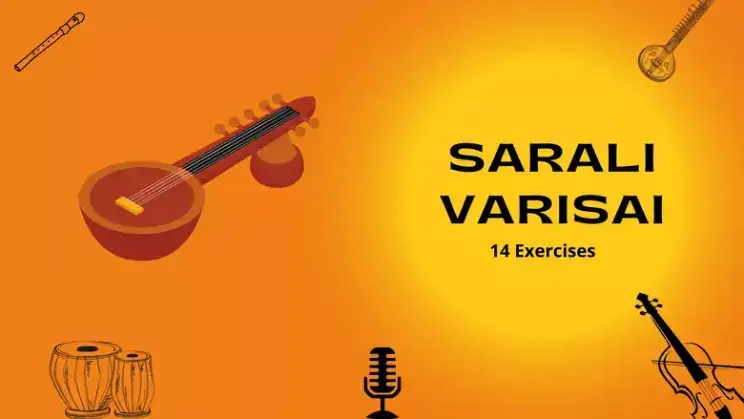


















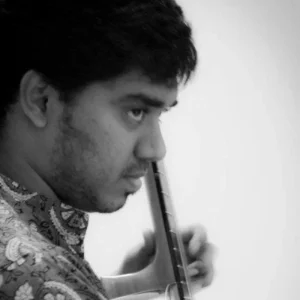


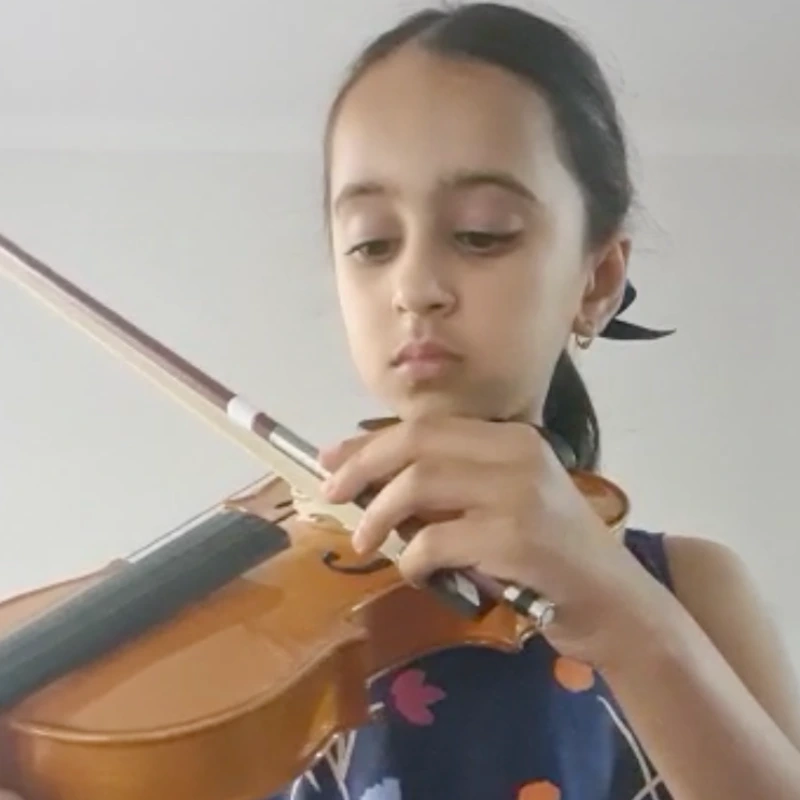

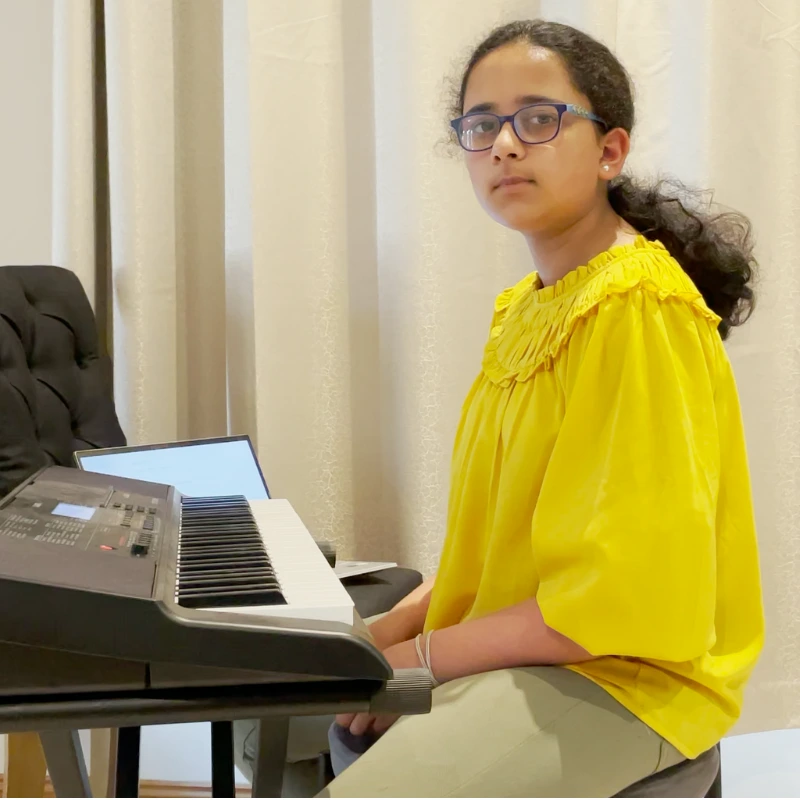
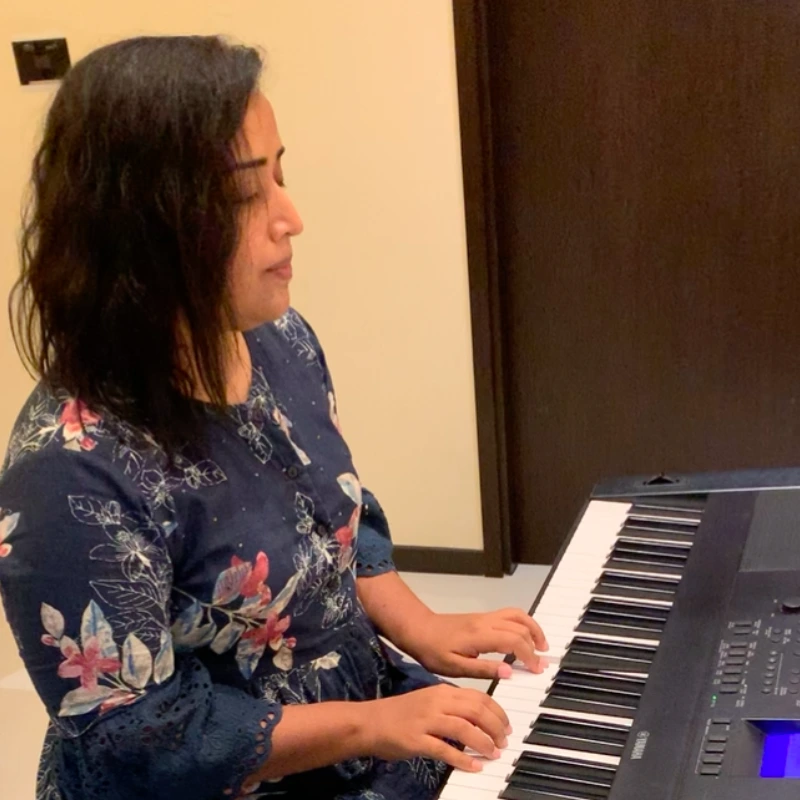
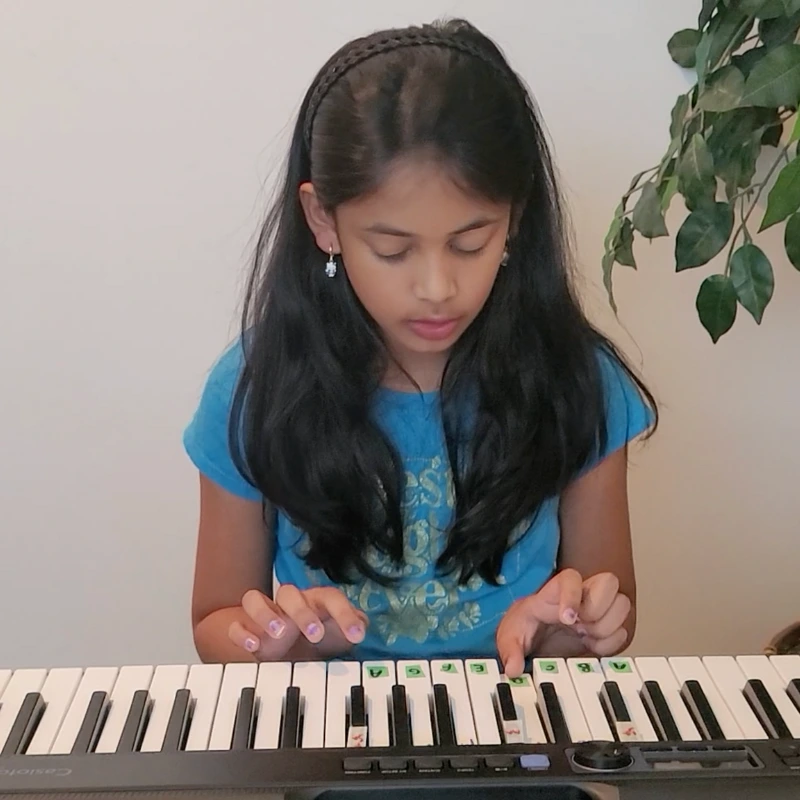






1 thought on “Sarali Varisai: A Simple Guide for Beginners”